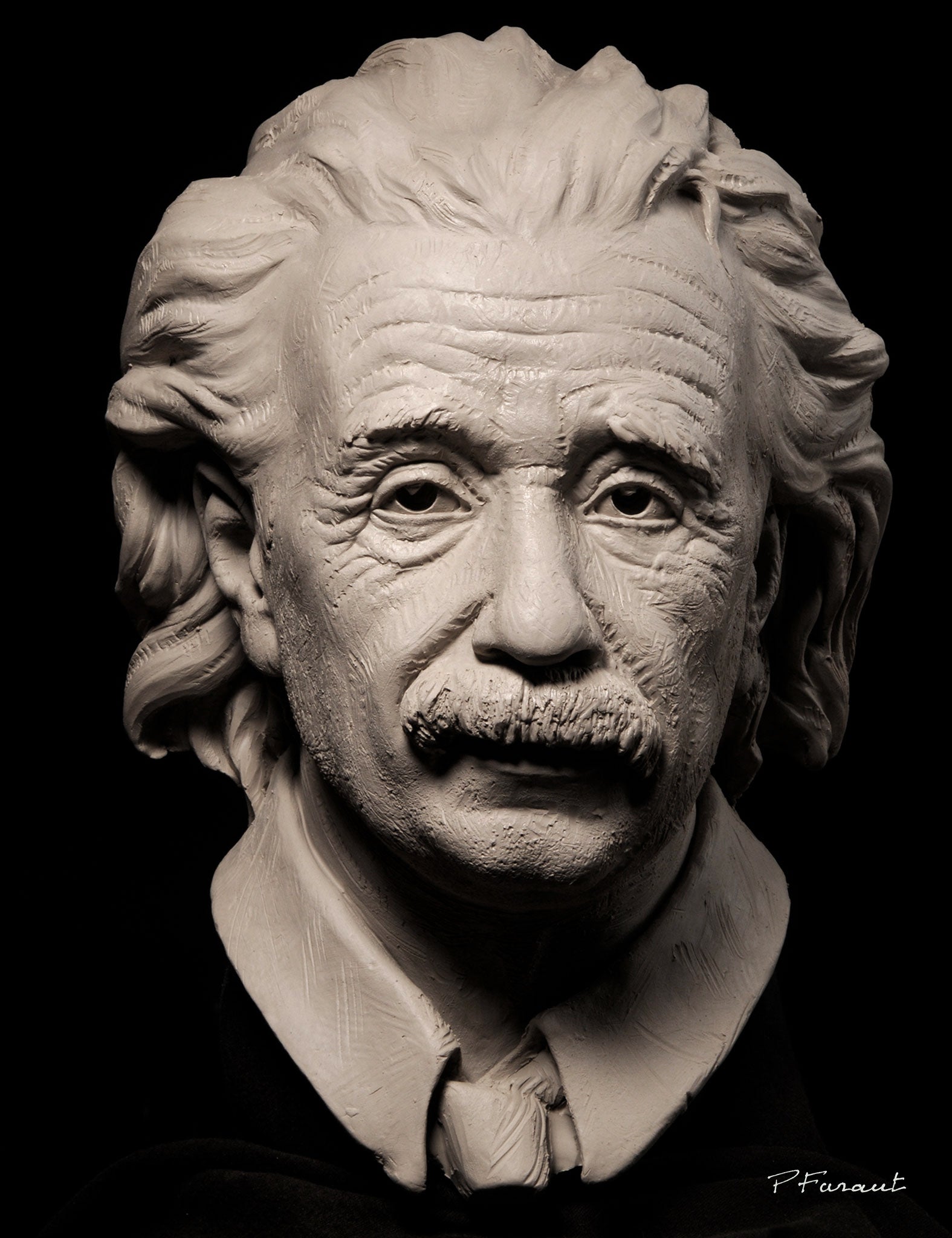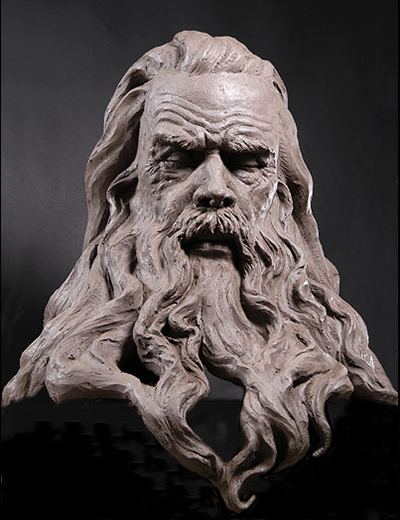Beyond Boundaries: Contemporary Sculptures Redefining Perspectives
Wiki Article
The Evolution of Sculptures: From Old to Modern
The Evolution of Sculptures: From Ancient to Modern. Robert C Hitchcock Sculptor.Sculpture, one of the oldest forms of art, has actually been an indispensable part of human civilization for millennia. From the old human beings of Egypt and Greece to the contemporary period, sculptures have developed, showing modifications in creative strategies, materials, and social impacts. This trip via time traces the growth of sculptures, checking out the changes stylishly, subject matter, and artistic expression.
Starting with the ancient globe, sculptures crafted from stone and later bronze captured the essence of divine beings, leaders, and everyday life. The Renaissance duration experienced a revival of classic sculpting techniques, as musicians sought to replicate the elegant kinds of ancient Greek and Roman sculptures (Robert C Hitchcock Sculptor). In the modern period, musicians challenged conventional limits, accepting abstraction and trial and error with brand-new materials
This exploration will dig right into the varied advancement of sculptures, disclosing the abundant tapestry of artistic expression across different periods and societies.

Ancient Sculptures: From Stone to Bronze
Old sculptures transitioned from being taken of stone to being cast in bronze. This change marked a considerable evolution in the art of sculpture, enabling greater refinement and information in the completed jobs. Rock sculptures, while excellent in their own right, were limited by the nature of the material. Rock needed considerable carving and shaping, usually causing a much more simplified representation of the subject.The intro of bronze as a tool for sculptures caused a revolution in artistic expression. Bronze offered sculptors the possibility to create detailed and realistic forms that were not feasible with stone. The procedure of casting bronze permitted the development of multiple duplicates of a sculpture, making it possible for wider circulation and preservation of these artistic work of arts.
The shift from rock to bronze additionally saw a change in the topic of sculptures. While stone sculptures mostly illustrated gods, goddesses, and mythical figures, bronze sculptures started to mirror a broader range of subjects, consisting of daily people and pets. This growth of topic showcased the flexibility and adaptability of the bronze medium.
Renaissance Revival: Forming in the Classic Design
The Renaissance rebirth of sculpture observed a revival in the timeless style, building upon the innovations made during the transition from stone to bronze in ancient sculptures. Throughout this duration, musicians sought to recreate the timeless visual and suitables of charm that were common in old Greek and Roman sculptures.One of the key attributes of the Renaissance revival was the emphasis on naturalism and the human type. Sculptors like Donatello and Michelangelo aim to record the physiological details and expressions of their topics with unprecedented accuracy. They studied the human body and incorporated their observations into their sculptures, leading to realistic and natural representations.
An additional vital element of the Renaissance revival was the expedition of perspective and depth. Artists used strategies such as contrapposto, where the weight of the body is moved to one side, developing a feeling of activity and dynamism. They likewise tried out with different materials, consisting of marble and bronze, to achieve a level of class and intricacy in their sculptures.

Innovation and the Avant-Garde: Damaging Typical Boundaries
Throughout the Modernism and Avant-Garde motions, artists pressed the limits of conventional artistic conventions. This period, which arised in the late 19th and very early 20th centuries, saw a remarkable shift in the means musicians came close to sculpture. Declining the concept of art as simple replica, modernist carvers sought to explore brand-new types, materials, and principles.
One of the key characteristics of modernist sculpture was the focus on abstraction. Artists relocated away from practical representations and instead concentrated on catching the essence of the topic through streamlined types and geometric shapes. This departure from typical depiction enabled artists to share their emotions and ideas in an extra individual and subjective fashion.

Contemporary Sculptures: Checking Out New Products and Concepts
With a focus on checking out brand-new products and ideas, modern sculptures have actually transformed the field of art. Artists today are pressing the boundaries of standard sculpture by experimenting and utilizing ingenious products with abstract concepts. These sculptures test traditional notions of form, materiality, and significance, welcoming customers to involve in a new and provocative artistic experience.Contemporary artists are accepting a variety of products, consisting of plastic, glass, metal, and also raw material. They are not limited to the typical tool of rock or clay, enabling for greater flexibility of expression and testing. This shift in the direction of non-traditional products has opened new possibilities for artists to produce sculptures that are dynamic, interactive, and visually striking.
In enhancement to exploring new products, modern sculptures likewise delve into complicated and abstract ideas. Musicians are see now discovering motifs such as identification, social issues, and the setting, utilizing sculpture as an effective tool for social commentary and self-questioning. These sculptures challenge audiences to believe seriously and engage with art on a deeper degree, stimulating conversations and prompting psychological feedbacks.
Worldwide Influences: Sculptural Traditions From Worldwide
Sculptural traditions from different regions of the globe have substantially shaped the advancement of sculptures throughout background. The international influences on sculpture have been varied and have actually contributed to the splendor and variety of artistic expressions. From the ancient worlds of Egypt, Greece, and Rome to the intricate carvings of Asian cultures, each region has developed its special sculptural practices that have actually influenced artists throughout time.In ancient Egypt, sculptures were produced mostly for spiritual and funerary functions. The legendary sculptures of pharaohs and gods, such as the Great Sphinx and the breast of Queen Nefertiti, showcase the Egyptians' mastery of stone carving and their belief in the afterlife.

In old Rome, sculpture served both political and creative objectives. Roman sculptures frequently depicted emperors, generals, and mythological numbers, mirroring the power and magnificence of the empire. The marble sculpture of Augustus of Prima Porta and the significant Arc of Constantine are remarkable instances of Roman sculptural accomplishments.
Asian sculptural traditions, specifically in India, China, and Japan, have likewise had a profound influence on the development of sculptures. Indian sculptures, such as the delicately carved holy places of Khajuraho and the colossal statuaries of Buddha, show an abundant fusion of spiritual, mythical, and architectural elements. Chinese sculptures, identified by their fine craftsmanship and interest to detail, often portray divine beings, animals, and fabulous numbers. Japanese sculptures, influenced by Buddhism, emphasize simpleness and harmony, seen in the peaceful statues of Buddha and the elegant art of bonsai.
The worldwide impacts on sculpture proceed to develop in the contemporary age. As we look to the future, it is certain that the worldwide influences on sculpture will continue to form and redefine this old art type.
Verdict
In conclusion, the evolution of sculptures has seen a change from ancient stone and bronze functions to the timeless resurgence during the Renaissance. This was adhered to by the breaking of conventional limits with modernism and the progressive activity. Today, contemporary sculptures discover new products and ideas, while additionally drawing inspiration from international sculptural practices. The trip of sculptures reflects the ever-changing imaginative expressions and social influences throughout history.From the old people of Egypt and Greece to the modern-day era, sculptures have advanced, mirroring changes in creative techniques, products, and cultural influences.Starting with the ancient globe, sculptures crafted from stone and later on bronze caught the significance of deities, leaders, and daily life.Ancient sculptures transitioned from being carved out of rock to being cast in bronze. While rock sculptures mainly shown gods, sirens, and mythical numbers, bronze sculptures started to show a more comprehensive variety of topics, including everyday individuals and animals.In verdict, the development of sculptures has actually seen a shift from ancient rock and bronze functions to the timeless rebirth during the Renaissance.
Report this wiki page